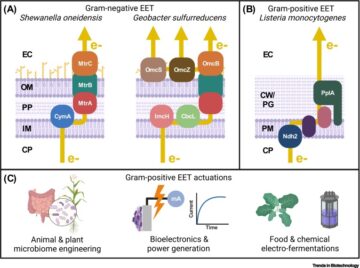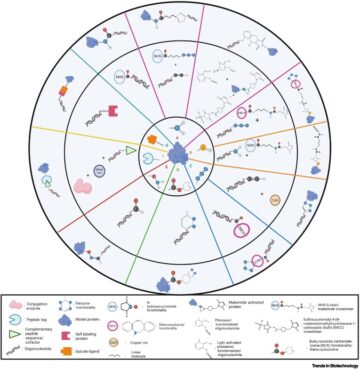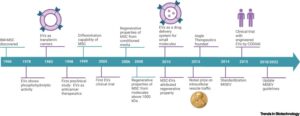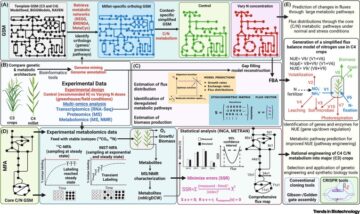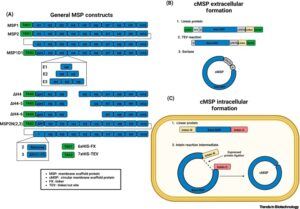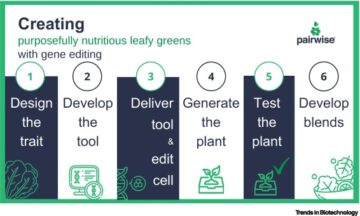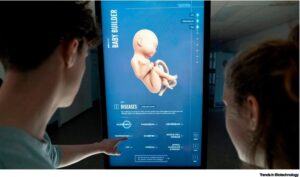
Production, use, and fate of all plastics ever made.
Sci. Adv. 2017; 3: E1700782
State of Plastics Waste in Asia and the Pacific – Issues, Challenges and Circular Economic Opportunities.
United Nations Centre For Regional Development, 2020
The State of Food Security and Nutrition in the World 2019: Safeguarding against Economic Slowdowns and Downturns.
World Food Programme, 2019
Climate change impacts on global agricultural land availability.
Environ. Res. Lett. 2011; 6014014
Climate change impacts on global food security.
Science. 2013; 341: 508-513
A snapshot of the world’s groundwater challenges.
Annu. Rev. Environ. Resour. 2020; 45: 171-194
Feeding Everyone No Matter What: Managing Food Security After Global Catastrophe.
Academic Press, 2014
Feeding everyone: solving the food crisis in event of global catastrophes that kill crops or obscure the sun.
Futures. 2015; 72: 57-68
Microbial degradation and valorization of plastic wastes.
Front. Microbiol. 2020; 11: 442
Microbial and enzymatic degradation of synthetic plastics.
Front. Microbiol. 2020; 11580709
Recycling of PET.
Eur. Polym. J. 2005; 41: 1453-1477
Biocatalytic degradation efficiency of postconsumer polyethylene terephthalate packaging determined by their polymer microstructures.
Adv. Sci. 2019; 619004916
Recycling of plastic solid waste: a state of art review and future applications.
Compos. Part B Eng. 2017; 115: 409-422
Plastic degradation and its environmental implications with special reference to poly(ethylene terephthalate).
Polymers. 2012; 5: 1-18
Polymer science and technology of plastics and rubbers.
J. Polym. Sci. A Polym. Chem. 1990; 30: 955-956
Macromolecules: an Introduction to Polymer Science.
Elsevier, 2012
The chemistry of chemical recycling of solid plastic waste via pyrolysis and gasification: state-of-the-art, challenges, and future directions.
Prog. Energy Combust. Sci. 2021; 84100901
Plastic recycling in additive manufacturing: a systematic literature review and opportunities for the circular economy.
J. Clean. Prod. 2020; 264121602
Systems analysis approach to polyethylene terephthalate and olefin plastics supply chains in the circular economy: a review of data sets and models.
ACS Sustain. Chem. Eng. 2021; 9: 7403-7421
Waste incineration and adverse birth and neonatal outcomes: a systematic review.
Environ. Int. 2014; 69: 120-132
Prevention of poly(vinyl chloride) degradation through organic terephthalamides generated from poly(ethylene terephthalate) waste.
J. Appl. Polym. Sci. 2019; 136: 48022
Colonization, biofilm formation and biodegradation of polyethylene by a strain of Rhodococcus ruber.
Appl. Microbiol. Biotechnol. 2004; 65: 97-104
Microbial degradation and deterioration of polyethylene – a review.
Int. Biodeterior. Biodegradation. 2014; 88: 83-90
Microbial degradation of polyurethane plastics.
Chin. J. Biotechnol. 2018; 34 : 1398-1409
The plastisphere in marine ecosystem hosts potential specific microbial degraders including Alcanivorax borkumensis as a key player for the low-density polyethylene degradation.
J. Hazard. Mater. 2019; 380120899
Resource recovery and circular economy from organic solid waste using aerobic and anaerobic digestion technologies.
Bioresour. Technol. 2020; 301122778
Thermophilic fungi in composts: their role in composting and industrial processes.
in: Tiquia-Arashiro S.M. Grube M. Fungi in Extreme Environments: Ecological Role and Biotechnological Significance. Springer International Publishing, 2019: 587-605
Plastic waste as a novel substrate for industrial biotechnology.
Microb. Biotechnol. 2015; 8: 900-903
New insights into polyurethane biodegradation and realistic prospects for the development of a sustainable waste recycling process.
Biotechnol. Adv. 2013; 31: 1634-1647
An overview on biodegradation of polystyrene and modified polystyrene: the microbial approach.
Crit. Rev. Biotechnol. 2018; 38: 308-320
Environmental consortium containing Pseudomonas and Bacillus species synergistically degrades polyethylene terephthalate plastic.
mSphere. 2020; 5 ()
Efficient biodegradation of highly crystallized polyethylene terephthalate through cell surface display of bacterial PETase.
Sci. Total Environ. 2020; 709136138
Efficient biodegradation of low-density polyethylene by cyanobacteria isolated from submerged polyethylene surface in domestic sewage water.
Environ. Sci. Pollut. Res. 2018; 25: 33508-33520
Plastic wastes biodegradation: mechanisms, challenges and future prospects.
Sci. Total Environ. 2021; 780146590
Low-density polyethylene degradation by Pseudomonas sp. AKS2 biofilm.
Environ. Sci. Pollut. Res. 2013; 20: 4146-4153
Comparative performance of PETase as a function of reaction conditions, substrate properties, and product accumulation.
ChemSusChem. 2022; 15e202101932
Degradation rates of plastics in the environment.
ACS Sustain. Chem. Eng. 2020; 8: 3494-3511
The three stages in degradation of polymers – polyethylene as a model substance.
J. Appl. Polym. Sci. 1988; 35: 1289-1302
Isolation and molecular identification of landfill bacteria capable of growing on di-(2-ethylhexyl) phthalate and deteriorating PVC materials.
J. Environ. Sci. Health A. 2012; 47: 2254-2262
Degradation of polypropylene-poly-L-lactide blend by bacteria isolated from compost.
Bioremediation J. 2018; 22: 73-90
Phylogenetic distribution of plastic-degrading microorganisms.
mSystems. 2021; 6: e01112-e01120
Novel synthesis, characterization of N1,N1,N4,N4-tetrakis (2-hydroxyethyl) terephthalamide (THETA) and terephthalic acid (TPA) by depolymerization of PET bottle waste using diethanolamine.
J. Macromol. Sci. A. 2013; 50: 1149-1156
Depolymerization and assimilation of poly (ethylene terephthalate) by whole-cell bioprocess.
IOP conference series. Mater. Sci. Eng.vol. 394. 2018: 22047 ()
Tat-independent secretion of polyethylene terephthalate hydrolase PETase in Bacillus subtilis 168 mediated by its native signal peptide.
J. Agric. Food Chem. 2018; 66: 13217-13227
The family Comamonadaceae.
in: Rosenberg E. The Prokaryotes. Springer, Berlin Heidelberg2014: 777-851
Characterization and engineering of a two-enzyme system for plastics depolymerization.
Proc. Natl. Acad. Sci. 2020; 117: 25476-25485
Landfill microbiome harbour plastic degrading genes: a metagenomic study of solid waste dumping site of Gujarat, India.
Sci. Total Environ. 2021; 779146184
Hydrolysis of cyclic poly(ethylene terephthalate) trimers by a carboxylesterase from Thermobifida fusca KW3.
Appl. Microbiol. Biotechnol. 2010; 87: 1753-1764
An engineered PET depolymerase to break down and recycle plastic bottles.
Nature. 2020; 580: 216-219
Secretory expression in Bacillus subtilis and biochemical characterization of a highly thermostable polyethylene terephthalate hydrolase from bacterium HR29.
Enzym. Microb. Technol. 2021; 143109715
Ideonella sakaiensis, PETase, and MHETase: from identification of microbial PET degradation to enzyme characterization.
Methods Enzymol. 2021; 648: 187-205
Metabolism of multiple aromatic compounds in corn stover hydrolysate by Rhodopseudomonas palustris.
Environ. Sci. Technol. 2015; 49: 8914-8922
A dual enzyme system composed of a polyester hydrolase and a carboxylesterase enhances the biocatalytic degradation of polyethylene terephthalate films.
Biotechnol. J. 2016; 11: 1082-1087
Structure of the plastic-degrading Ideonella sakaiensis MHETase bound to a substrate.
Nat. Commun. 2019; 10: 1717
Environmental biodegradation of synthetic polymers II. Biodegradation of different polymer groups.
Trends Anal. Chem. 2010; 29: 84-100
Biodegradation of diethyl terephthalate and polyethylene terephthalate by a novel identified degrader Delftia sp. WL-3 and its proposed metabolic pathway.
Lett. Appl. Microbiol. 2018; 67: 254-261
A bacterium that degrades and assimilates poly(ethylene terephthalate).
Science. 2016; 351: 1196-1199
Influence of substrate crystallinity and glass transition temperature on enzymatic degradation of polyethylene terephthalate (PET).
New Biotechnol. 2022; 69: 28-35
Multifactorial diversity sustains microbial community stability.
ISME J. 2013; 7: 2126-2136
Comparative degradation by micro-organisms of terephthalic acid, 2,6-naphthalene dicarboxylic acid, their esters and polyesters.
Polym. Degrad. Stab. 1999; 64: 9-16
Comparative 16S rRNA gene surveys of granular sludge from three upflow anaerobic bioreactors treating purified terephthalic acid (PTA) wastewater.
Water Sci. Technol. 2011; 64: 1406-1412
Characterization of the protocatechuate 4,5-cleavage pathway operon in Comamonas sp. strain E6 and discovery of a novel pathway gene.
Appl. Environ. Microbiol. 2010; 76: 8093-8101
Characterization of the terephthalate degradation genes of Comamonas sp. strain E6.
Appl. Environ. Microbiol. 2006; 72: 1825
The 4-oxalomesaconate hydratase gene, involved in the protocatechuate 4,5-cleavage pathway, is essential to vanillate and syringate degradation in Sphingomonas paucimobilis SYK-6.
J. Bacteriol. 2000; 182: 6950-6957
Discovery of novel p-hydroxybenzoate-m-hydroxylase, protocatechuate 3,4 ring-cleavage dioxygenase, and hydroxyquinol 1,2 ring-cleavage dioxygenase from the filamentous fungus Aspergillus niger.
ACS Sustain. Chem. Eng. 2019; 7: 19081-19089
Molecular and biochemical analysis of phthalate and terephthalate degradation by Rhodococcus sp. strain DK17.
FEMS Microbiol. Lett. 2005; 252: 207-213
Depolymerization of poly(ethylene terephthalate) in dilute aqueous ammonia solution under hydrothermal conditions.
J. Chem. Technol. Biotechnol. 2008; 83: 1381-1386
Chemical recycling of poly(ethylene terephthalate).
Ind. Eng. Chem. Res. 1997; 36: 1373-1383
Techno-economic, life-cycle, and socioeconomic impact analysis of enzymatic recycling of poly(ethylene terephthalate).
Joule. 2021; 5: 2479-2503
Isolation and characterization of the tellurite-reducing photosynthetic bacterium, Rhodopseudomonas palustris strain TX618.
Water Air Soil Pollut. 2018; 229: 1-10
Bioremediation through microbes: systems biology and metabolic engineering approach.
Crit. Rev. Biotechnol. 2019; 39: 79-98
Microbial interactions drive the complete catabolism of the antibiotic sulfamethoxazole in activated sludge microbiomes.
Environ. Sci. Technol. 2021; 55: 3270-3282
Synergistic degradation of pyrene by five culturable bacteria in a mangrove sediment-derived bacterial consortium.
J. Hazard. Mater. 2018; 342: 561-570
Synergistic biodegradation of aromatic-aliphatic copolyester plastic by a marine microbial consortium.
Nat. Commun. 2020; 11: 5790
The future supply of animal-derived protein for human consumption.
Trends Food Sci. Technol. 2013; 29: 62-73
Value-added food: single cell protein.
Biotechnol. Adv. 2000; 18: 459-479
Single cell protein: a potential substitute in human and animal nutrition.
Sustainability. 2021; 13: 9284
Microbial protein: future sustainable food supply route with low environmental footprint.
Microb. Biotechnol. 2016; 9: 568-575
Microbial food: microorganisms repurposed for our food.
Microb. Biotechnol. 2022; 15: 18-25
Sustainability and future food security – a global perspective for livestock production.
Land Degrad. Dev. 2019; 30: 561-573
Single cell protein-state-of-the-art, industrial landscape and patents 2001–2016.
Front. Microbiol. 2017; 8: 2009
Oleaginous yeast as a component in fish feed.
Sci. Rep. 2018; 8: 15945
U.S. potential of sustainable backyard distributed animal and plant protein production during and after pandemics.
Sustainability. 2021; 13: 5067
Methane as a resource: can the methanotrophs add value?.
Environ. Sci. Technol. 2015; 49: 4001-4018
Fungal protein for food.
in: Dijksterhuis J. Samson R.A. Food Mycology: A Multifaceted Approach to Fungi and Food. CRC Press, 2007: 353-360
Food commodities from microalgae.
Curr. Opin. Biotechnol. 2013; 24: 169-177
Amino acid profiles and presumptive nutritional assessment of single-cell protein from certain lactobacilli.
Appl. Environ. Microbiol. 1977; 33: 901-905
Microalgae in novel food products. Algae: nutrition, pollution control and energy sources.
in: Papadopoulos K.N. Food Chemistry Research Developments. Nova Science Publishers, Inc, 2008
Large-scale cultivation of Euglena.
Euglena Biochem. Cell. Mol. Biol. 2017; 979: 285-293
QuornTM myco-protein – overview of a successful fungal product.
Mycologist. 2004; 18: 17-20
Evaluation of methane-utilising bacteria products as feed ingredients for monogastric animals.
Arch. Anim. Nutr. 2010; 64: 171-189
Myco-protein from Fusarium venenatum: a well-established product for human consumption.
Appl. Microbiol. Biotechnol. 2002; 58: 421-427
Single cell protein: production and process.
Am. J. Food Technol. 2011; 6: 103-116
Preliminary automated determination of edibility of alternative foods: non-targeted screening for toxins in red maple leaf concentrate.
Plants. 2019; 8: 110
Can direct conversion of used nitrogen to new feed and protein help feed the world?.
Environ. Sci. Technol. 2015; 49: 5247-5254
Large-scale continuous production of single cell protein.
Chem. Ingenieur Tech. 1986; 58: 934-937
Pyrolysis-aided microbial biodegradation of high-density polyethylene plastic by environmental inocula enrichment cultures.
ACS Sustain. Chem. Eng. 2022; 10: 2022-2033
Micropyrolysis of polyethylene and polypropylene prior to bioconversion: the effect of reactor temperature and vapor residence time on product distribution.
ACS Sustain. Chem. Eng. 2021; 9: 14443-14450
Study of the viscosity and thermal characteristics of polyolefins/solvent mixtures: applications for plastic pyrolysis.
ACS Omega. 2021; 6: 32832-32840
Nitrogen in global animal production and management options for improving nitrogen use efficiency.
Sci. China C Life Sci. Chin. Acad. Sci. 2005; 48: 871-887
Metabolic engineering of Gluconobacter oxydans for improved growth rate and growth yield on glucose by elimination of gluconate formation.
Appl. Environ. Microbiol. 2010; 76: 4369-4376
Revealing metabolic mechanisms of interaction in the anaerobic digestion microbiome by flux balance analysis.
Metab. Eng. 2020; 62: 138-149
Potential of microbial protein from hydrogen for preventing mass starvation in catastrophic scenarios.
Sustain. Prod. Consum. 2021; 25: 234-247
Open source software toolchain for automated non-targeted screening for toxins in alternative foods.
MethodsX. 2021; 8101551
Alternative model organisms for toxicological fingerprinting of relevant parameters in food and nutrition.
Crit. Rev. Food Sci. Nutr. 2021; ()
The C. elegans model in toxicity testing.
J. Appl. Toxicol. 2017; 37: 50-59
Assessing recycling versus incineration of key materials in municipal waste: the importance of efficient energy recovery and transport distances.
Waste Manag. 2012; 32: 1009-1018
Recycling of poly(ethylene terephthalate) – a review focusing on chemical methods.
Express Polym Lett. 2016; 10: 559-586
Towards bio-upcycling of polyethylene terephthalate.
Metab. Eng. 2021; 66: 167-178
Analysis of polyester resins by gas chromatography.
Anal. Chem. 1963; 35: 236-238
Polyesters.
in: Ullmann’s Encyclopedia of Industrial Chemistry. John Wiley, 2018: 1-30
Mandoki, J.W. Invista North America LLC. Depolymerization of condensation polymers, US4605762A
Chemical and biological degradation of waste plastics.
Nature. 1974; 250: 161
Investigation of alkaline hydrolysis of polyethylene terephthalate by differential scanning calorimetry and thermogravimetric analysis.
J. Appl. Polym. Sci. 1998; 70: 1939-1945
Kinetics of glycolysis of polyethylene terephthalate with zinc catalyst.
Polym. Int. 1999; 48: 885-888
Aspects of the chemistry of poly(ethylene terephthalate): 5. Polymerization of bis(hydroxyethyl)terephthalate by various metallic catalysts.
Polymer. 1984; 25: 1333-1336
Blackmon, K.P. et al., SABIC Global Technologies BV. Process for converting pet scrap to diamine monomers, US4973746A
The human carbon budget: an estimate of the spatial distribution of metabolic carbon consumption and release in the United States.
Biogeochemistry. 2009; 94: 29-41
Up-cycling of PET (polyethylene terephthalate) to the biodegradable plastic PHA (polyhydroxyalkanoate).
Environ. Sci. Technol. 2008; 42: 7696-7701
Towards bio-upcycling of polyethylene terephthalate.
Metab. Eng. 2021; 66: 167-178
Conversion of post consumer polyethylene to the biodegradable polymer polyhydroxyalkanoate.
Appl. Microbiol. Biotechnol. 2014; 98: 4223-4232
Tandem chemical deconstruction and biological upcycling of poly(ethylene terephthalate) to β-ketoadipic acid by Pseudomonas putida KT2440.
Metab. Eng. 2021; 67: 250-261
A chemo-microbial hybrid process for the production of 2-pyrone-4,6-dicarboxylic acid as a promising bioplastic monomer from PET waste.
Green Chem. 2020; 22: 3461-3469
The metabolic potential of plastics as biotechnological carbon sources – review and targets for the future.
Metab. Eng. 2022; 71: 77-98
Biodegradation of benzene by halophilic and halotolerant bacteria under aerobic conditions.
Appl. Environ. Microbiol. 2004; 70: 1222-1225
- SEO Powered Content & PR Distribution. Get Amplified Today.
- Platoblockchain. Web3 Metaverse Intelligence. Knowledge Amplified. Access Here.
- Source: https://www.cell.com/trends/biotechnology/fulltext/S0167-7799(22)00152-4?rss=yes
- 1
- 2019
- a
- accumulation
- additive manufacturing
- adverse
- After
- against
- Agricultural
- AIR
- All
- alternative
- america
- analysis
- and
- animal
- animals
- applications
- approach
- Art
- asia
- assessment
- authors
- Automated
- availability
- Bacteria
- Balance
- biology
- biotechnology
- Birds
- Blend
- bound
- Break
- budget
- capable
- carbon
- Catalyst
- catalysts
- catastrophic
- centre
- certain
- chains
- challenges
- change
- characteristics
- chemical
- chemistry
- chin
- China
- circular economy
- Commodities
- community
- complete
- component
- composed
- concentrate
- conditions
- Conference
- consortium
- consumer
- consumption
- continuous
- control
- Conversion
- crisis
- crops
- cultivation
- D.C.
- data
- data sets
- determination
- determined
- Dev
- Development
- developments
- different
- direct
- discovery
- Display
- distributed
- distribution
- Diversity
- Domestic
- down
- downturns
- drive
- during
- Ecological
- Economic
- economy
- ecosystem
- effect
- efficiency
- efficient
- energy
- Engineering
- Enhances
- Environment
- environmental
- environments
- essential
- estimate
- Event
- EVER
- everyone
- extreme
- family
- films
- Fingerprinting
- Fish
- FLUX
- focusing
- food
- food supply
- foods
- Footprint
- formation
- from
- function
- future
- GAS
- generated
- glass
- Global
- Group’s
- Growing
- Growth
- Health
- help
- highly
- HTTPS
- human
- Hybrid
- hydrogen
- Identification
- identified
- Impact
- Impacts
- implications
- importance
- improved
- improving
- in
- Including
- india
- industrial
- insights
- interaction
- interactions
- International
- Introduction
- involved
- isolated
- Key
- Kill
- Land
- landscape
- Life
- life-cycle
- List
- literature
- LLC
- Low
- made
- management
- managing
- manufacturing
- Maple
- Marine
- Mass
- materials
- Matter
- methods
- Microbiome
- model
- models
- modified
- MOL
- molecular
- multifaceted
- multiple
- municipal
- Nations
- native
- New
- North
- north america
- novel
- novel food
- nutrition
- ONE
- opportunities
- Options
- organic
- organization
- overview
- Pacific
- packaging
- Pandemics
- parameters
- part
- Patents
- performance
- perspective
- PHA
- plastic
- plastics
- plato
- Plato Data Intelligence
- PlatoData
- player
- Pollution
- polymer
- Polymers
- Post
- potential
- preventing
- Prior
- process
- processes
- Product
- Production
- Products
- Profiles
- promising
- properties
- proposed
- prospects
- Protein
- publishers
- Rate
- Rates
- reaction
- realistic
- recovery
- recycling
- Red
- regional
- release
- relevant
- research
- resource
- review
- Role
- Route
- scanning
- scenarios
- SCI
- Science
- Science and Technology
- screening
- security
- Series
- Sets
- Signal
- significance
- single
- site
- slowdowns
- Snapshot
- socioeconomic
- Software
- solid
- solution
- Solving
- Source
- Sources
- Spatial
- special
- specific
- Stability
- stages
- State
- state-of-the-art
- States
- STONE
- Study
- substance
- successful
- Sun
- supply
- Supply chains
- Surface
- sustainable
- synthetic
- system
- Systems
- targets
- tech
- Technologies
- Technology
- Testing
- The
- The Future
- the world
- their
- thermal
- Theta
- three
- Through
- time
- to
- Total
- transition
- transport
- treating
- u.s.
- under
- United
- United States
- use
- value
- various
- Versus
- via
- vinyl
- W
- Waste
- Water
- What
- world
- world’s
- X
- Yield
- zephyrnet


